
14 May, 2015
The downside of Myanmar’s tourism boom, and 11 simple tips to stem the rot
Bangkok – Regional and international ecotourism experts are to convene for a May 19-21 conference in Nay Pyi Taw, Myanmar to discuss ecotourism in protected areas. According to the publicity material, topics include using ecotourism to finance nature conservation, transboundary heritage trails and much more!
Before reaching for the sky, Myanmar needs to focus on grassroots solutions first. My wife and I toured Myanmar over 10 days in April 2015. Here is a list of 11 observations that may help boost the visitor experience, devoid of any need for high-level conferences or ecotourism experts:
1. PLASTIC-BAG PANDEMIC IN PAGAN: This was a real shocker. It was appalling to see the thousands of plastic bags strewn all over the place especially in the immediate vicinity of many temples. One would have thought that a place with such great potential for UNESCO World Heritage status would have been kept in a much more cleaner environment. We saw signage indicating that an anti-littering public-service campaign was under way. The Indian government is providing $2 million in assistance for the restoration of one of the major Pagan temples. Clearing the plastic bags does not require any foreign funds. Surely the local municipal services have enough money for this.
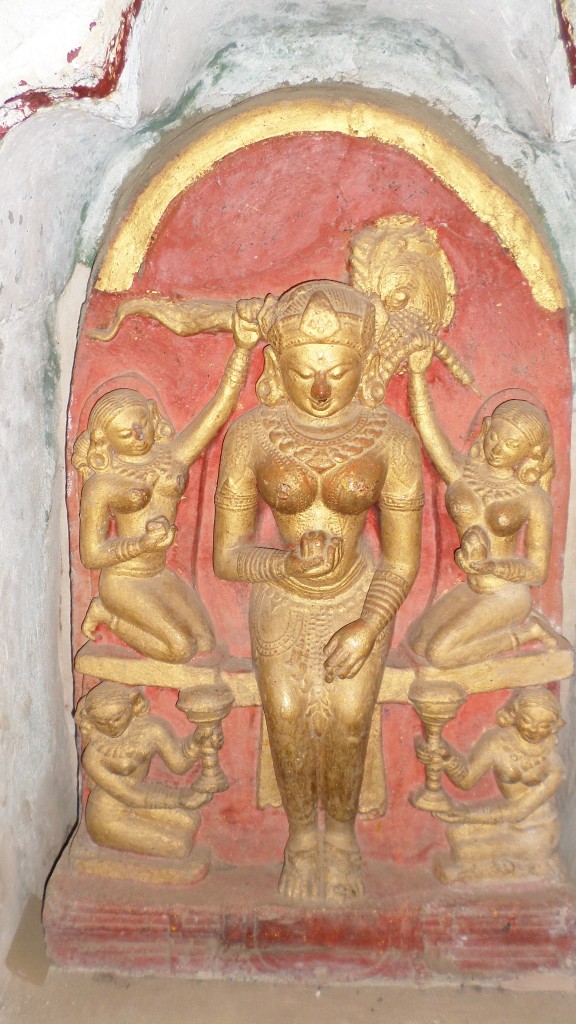 This exquisite figurine at a temple in Pagan was covered with dust. |
2. DUSTY IMAGES ALL OVER: Many Buddha images have not even had a feather-duster run over them in recent years. They are just covered with grime. Same with just about all monuments. If these are supposed to be places of cultural heritage and worship, having them dusted at least once a week would go a long way towards enhancing their appearance. That would be good for local worshippers and make them look better in the selfies.
3. POOR STREET SIGNAGE: Many cyclists are making the rounds of Myanmar’s tourist spots. Cycling is considered an ecotourism activity. It would be immensely boosted if there was proper signage in a couple of languages. There is virtually none. Sure, the GPRS maps are a big help but following directions would be far easier the old-fashioned way. Not everyone has a high-tech phone, nor is inclined to use them.
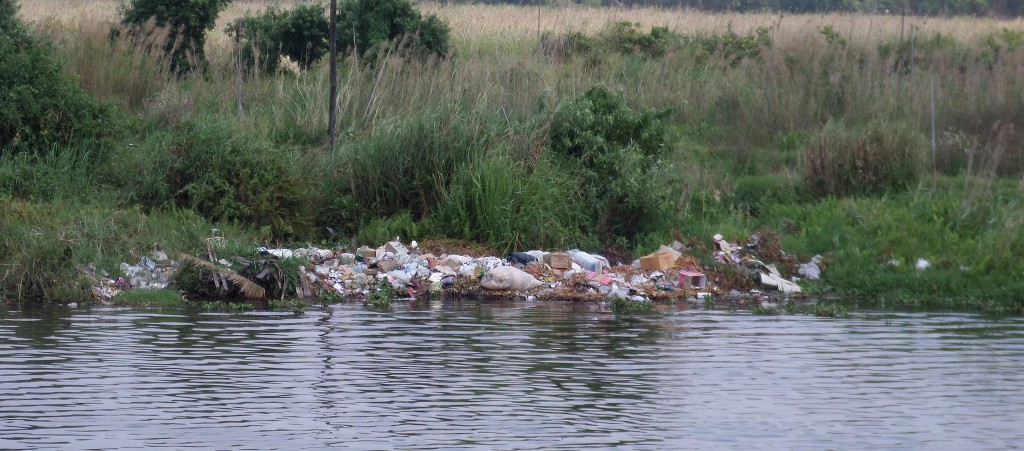 Garbage dumped on the shores of Inle Lake. |
4. WASTE BINS HARDLY TO BE SEEN: Garbage bins are provided but sparsely, both in the main cities as well as in the provincial areas. Why is this such a problem? The locals just throw their waste anywhere they can find a spot. If the adage “When in Rome do as the Romans do” applies, then should visitors do the same?
5. TOILETS IN A MESS: In very few tourist spots did we find clean toilets. Just about everywhere, we had to either use the restaurant stops or wait until we got back to the hotels. In some tourist spots, such as temples and pagodas, we often found squatting toilets, unusable by those with knee or leg problems, especially women.
6. POOR QUALITY OF MUSEUMS. Our itinerary did not include a single museum. I asked our guide if we could visit the National Museum in Yangon. He replied frankly that it was not worth it. What a shame.
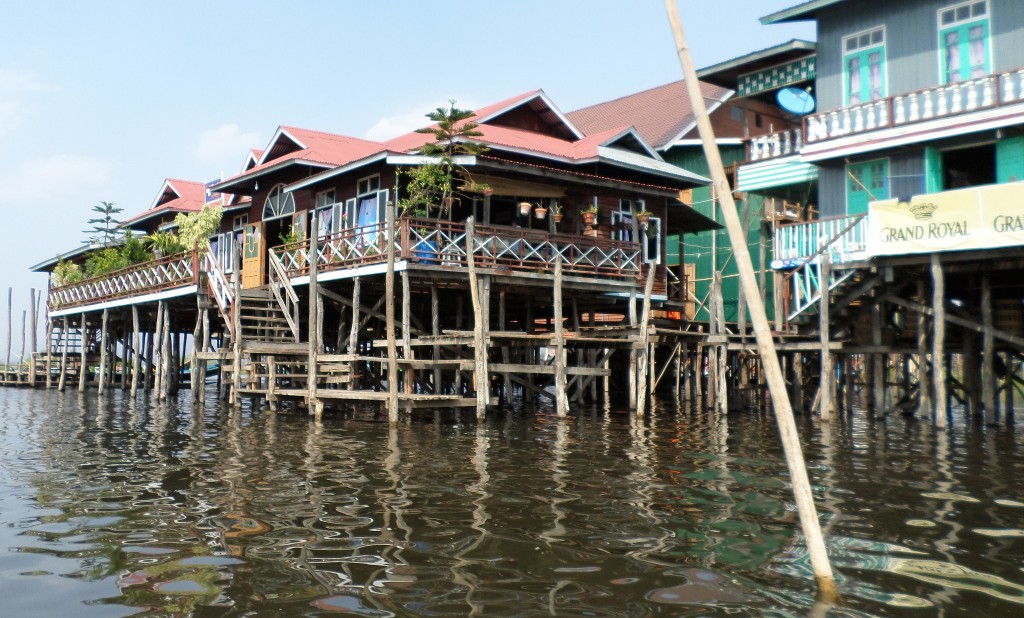 Polluted dark-brown waters of Inle Lake where restaurants and hotels are causing as much damage as proliferating housing needs of the local population. |
7. SHODDY INTERPRETATION SIGNAGE AT HISTORIC SITES: Much of the interpretation signage at just about all the spots we visited is dilapidated and out of sync with the cultural and heritage value of the site. As the quality of guides varies from person to person, it makes eminent sense to provide high quality signage and interpretation so that visitors can read up on the sites for themselves. In at least two places, what the guide told us did not tally with the interpretation.
8. NO COUNTRY FOR THE PHYSICALLY CHALLENGED: This is always a problem in most parts of Asia, even though we like to claim that we respect our elders more than the people of the West. Virtually none of the tourist spots have proper wheelchair access. And toilets for People with Disabilities are out of the question.
9. VENDORS BADLY ORGANISED: Nearly everywhere we went, vendors were selling almost identical products right next to each other. In places such as the Ein Dain Pagoda complex, almost the entire half a kilometre walk to the complex is lined on both sides by vendors selling virtually the same products. Providing them with facilities to sell is certainly a good thing, but getting the place organised a little bit more efficiently will help boost sales.
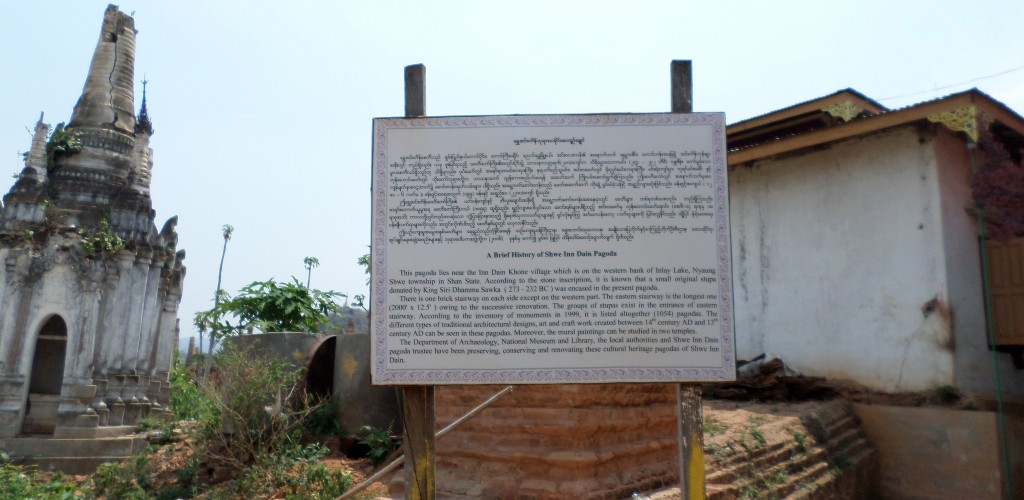 The makeshift interpretation signage at the Shwe Ein Dain Pagoda complex. |
10. MANAGEMENT OF TOURIST FLOWS: Spiritual spots are primarily meant for worship and prayer, not for camera-toting tourists. Those praying have absolute priority, and every right not to be disturbed by visitors. This is a problem in places such as Mandalay, Phaungdaw Oo Pagoda in Inle Lake and the Shwedagon Pagoda in Yangon. The numbers of visitors and worshippers are growing in equal proportion. The temples were not originally designed to accommodate hordes of visitors. Surely enough indigenous expertise exists in Myanmar to ensure proper visitor management.
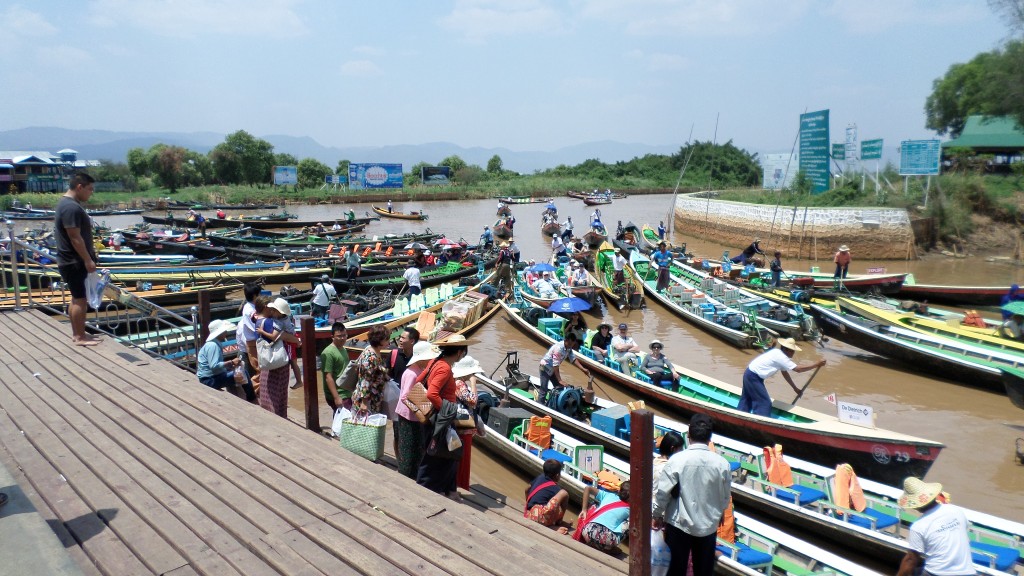 The armada of long-tail boats at the Phaungdaw Oo Pagoda at Inle Lake |
11. HIGH-DECIBEL BOAT ENGINES ON INLE LAKE: Tranquility adds to the pristine atmosphere of Inle Lake. The noisy racket of long-tail boats destroys it. This used to be a major problem on the Chao Phraya river in Bangkok, until the hotels protested. Miraculously, ways were found to muffle the engines. In our Inle Lake hotel, the noisy boats are not allowed into the cove. Guests coming in by boat are deposited at a point about 200 m away from the hotel pier, and then taken the rest of the way by a leg-rower. Silencing unnecessary noise pollution will go a long way towards enhancing the sense of place.
CONCLUSION
These are all back to basics issues. They do not involve much money, nor do they require any foreign aid, expensive consultants, master planning, feasibility studies, erudite reports or conferences. Keeping our homes clean and well-organised is fundamental to life anywhere, especially if you are constantly inviting visitors and guests.
In spite of lofty promises made in public speeches, Myanmar is repeating the mistakes of its ASEAN neighbours. All of them have followed the same path – spent too much money upgrading roads and airports and building fancy hotels rather than fixing grassroots issues. Right across the country, the graph-lines are intersecting between the number of visitors and overall visitor experience. As the numbers grow, the quality vs quantity factor is showing signs of serious imbalance.
Financial institutions such as the Asian Development Bank are pouring huge amounts of money into Myanmar to upgrade infrastructure. Redefining “infrastructure” may allow them to include the points mentioned above. Visitors generally understand that it will take years to build highways and airports, and renovate and restore the magnificent pagodas and stupas. But that should not preclude far simpler and fundamental actions from being taken at the grassroots level.
I was invited to attend the International Ecotourism Conference next week, but could not make it. If I had, the above is what I would have said. Hope it provides food for thought.



Liked this article? Share it!